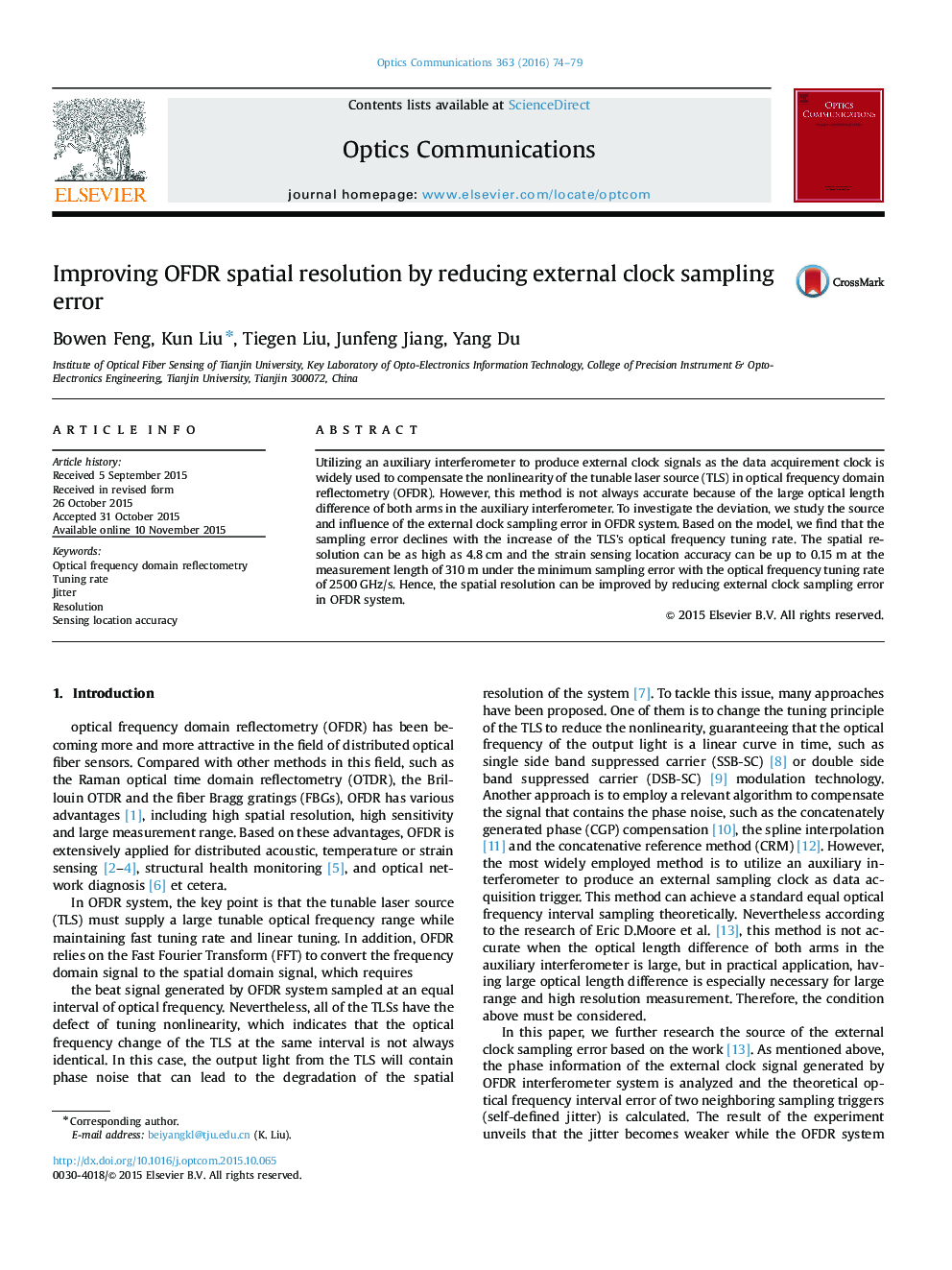| Article ID | Journal | Published Year | Pages | File Type |
|---|---|---|---|---|
| 1533679 | Optics Communications | 2016 | 6 Pages |
Abstract
Utilizing an auxiliary interferometer to produce external clock signals as the data acquirement clock is widely used to compensate the nonlinearity of the tunable laser source (TLS) in optical frequency domain reflectometry (OFDR). However, this method is not always accurate because of the large optical length difference of both arms in the auxiliary interferometer. To investigate the deviation, we study the source and influence of the external clock sampling error in OFDR system. Based on the model, we find that the sampling error declines with the increase of the TLS's optical frequency tuning rate. The spatial resolution can be as high as 4.8Â cm and the strain sensing location accuracy can be up to 0.15Â m at the measurement length of 310Â m under the minimum sampling error with the optical frequency tuning rate of 2500Â GHz/s. Hence, the spatial resolution can be improved by reducing external clock sampling error in OFDR system.
Related Topics
Physical Sciences and Engineering
Materials Science
Electronic, Optical and Magnetic Materials
Authors
Bowen Feng, Kun Liu, Tiegen Liu, Junfeng Jiang, Yang Du,
